|
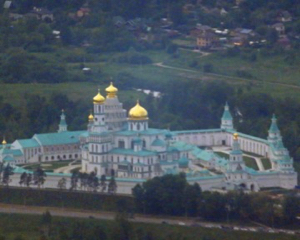 |
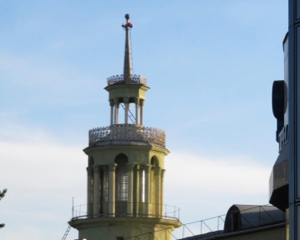 |
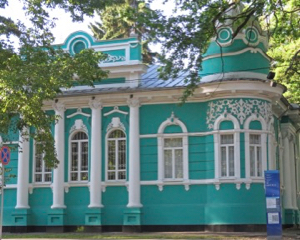 |
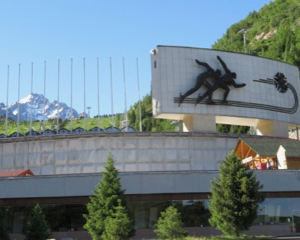 |
|
On our way to Almaty we had a flight transfer in Moscow, and as we approached the airport, out of our window we had a good view of the town of Istra and the famous New Jerusalem Monastery (Новоиерусалимский монастырь), which is also known as the Voskresensky (Resurrection) Monastery, which was completed in the 1690s, and has been rennovated in the past decade. |
Upon our arrival in Almaty, we noticed this spire on the old terminal adjacent to the newer airport terminal we used. It seemed typical of Soviet public architecture to me. The first supersonic commercial jet flight in the world landed here in Almaty; a flight from Moscow on a TU-144 back in 1968. |
Typical older building in Almaty (a merchant’s home) at the corner of Furmanov Street and Kurmangazy Street, near where our bus from the airport dropped us. |
The Medeu ice skating rink in the mountain suburbs of Almaty. The bus (#12) from downtown Almaty dropped us here, and then we took a shuttle bus up to Shymbulak resort area. This is a huge ice skating rink, and it is at a high elevation (1690 meters, 5545 feet). It is quite old, dating back to the early 1950s. |
|
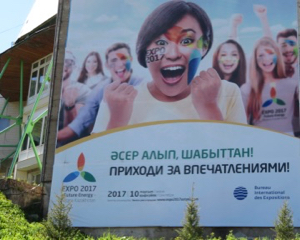 |
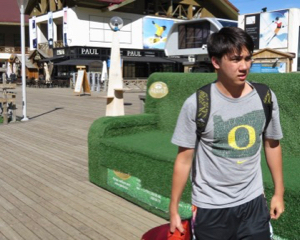 |
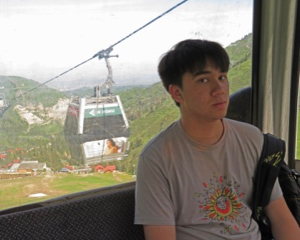 |
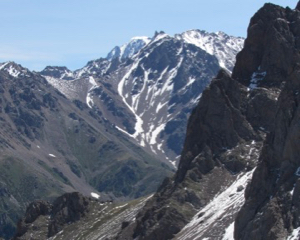 |
|
Advertisement for the World Expo at the Shymbulak Resort area. This particular image with the enthusiastic young people with face paint was widespread in Almaty and Astana. |
Arthur on the deck near the cable car station at the Shymbulak resort area. This resort area has a hotel (where we stayed for one night), a gift shop, an information center, and many restaurants. |
Arthur riding a cable car up from Shymbulak (2400 meters) to the middle station at 2840 meters, and from there we took the next cable car up to Talgar Pass at 3180 meters. |
View of mountains up near Talgar Pass. Pik Talgar (approximately 5000 meters) is the high mountain in the distance (just peeking over the ridge a little to the left of the summit), and the peak in the middle distance in front of Pik Talgar is about 4000 meters high. |
|
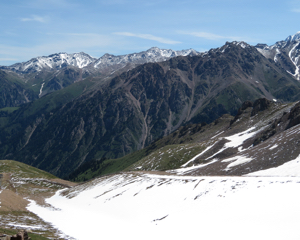 |
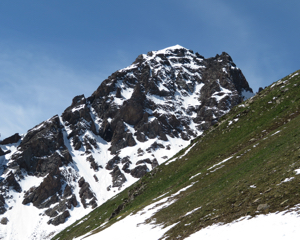 |
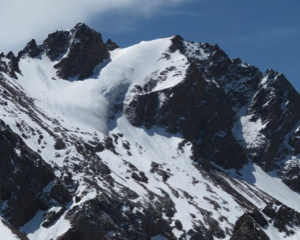 |
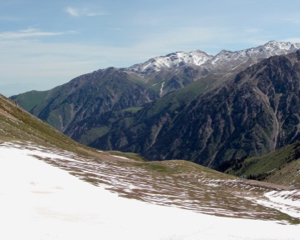 |
|
Talgar Pass view looking east northeast toward a distant ridge line with peaks at 3700 to 4000 meters high. |
View of a peak from cable car to Talgar Pass. I think this is the Komsomol peak (4376 meters) |
The boot-shaped glacier seen from Talgar Pass, but I had some confusion about whether this is on Manshuk Mametova Peak (4190 m) or Amangeldy Peak (4010 m) or Komsomol Peak (4376 m). I think it should be Amangeldy Peak. |
Near the weather station at the start of the ascent of Shymbulak Peak from Talgar Pass, looking east northeast. |
|
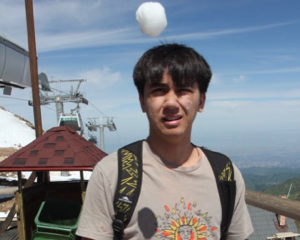 |
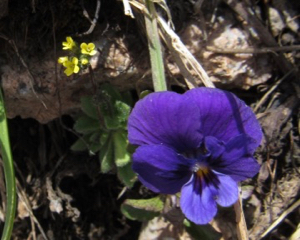 |
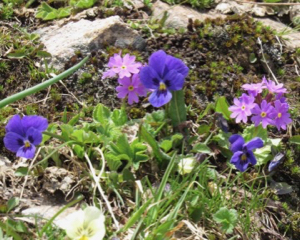 |
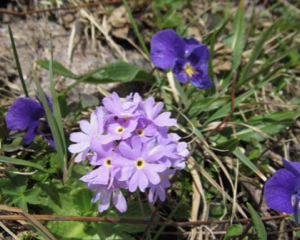 |
|
Arthur tosses a snowball on Talgar Pass |
Flowers were abundant at Talgar Pass, like these huge Altai Violets (looked more like pansies than violets). Those tiny four-petal yellow flowers in a cluster look like North America’s spreading bladderpod (cloth-of-gold) (somethigng in the Lesquerella or Paysonia genus), but it must be some Central Asian alpine relative in the mustard family. |
Flowers at Talgar Pass such as the pink primulas and Altai violets |
Flowers (Primula minkwitziae or Primula algida and Viola altaica) at Talgar Pass |
|
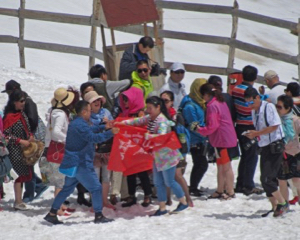 |
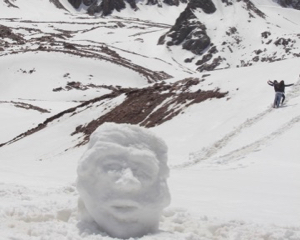 |
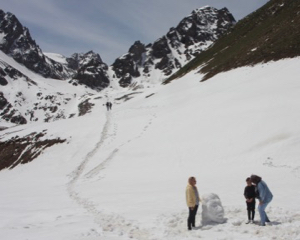 |
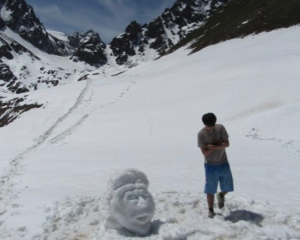 |
|
Chinese tourists at Talgar Pass |
Snowman (head of the snowman) Arthur and I made in the late morning up on Talgar Pass. |
Many people enjoyed our grotesque little snow man head, and people would pose by it and take photographs. |
We made the snow face between 11:00 and 11:30, but did a little bit more work on it around noon. |
|
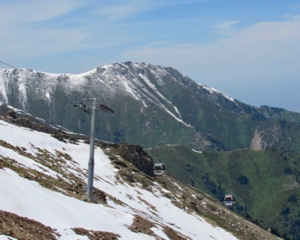 |
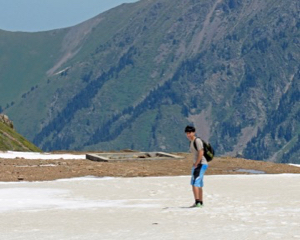 |
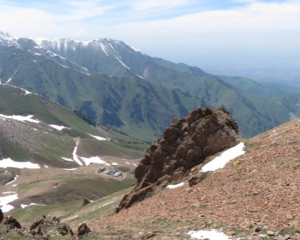 |
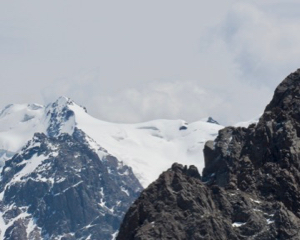 |
|
The cable car system brings people up from Shymbulak (2400 meters) to Talgar Pass at 3180 meters, and we climbed up an additional 200 meters or so, over half-way from Talgar Pass toward the top of Shymbulak Peak. |
Arthur walks across a snow field near the weather station at Talgar Pass. |
Looking down the valley toward the ski resort from the slopes of Shymbulak Peak. |
Looking past Peak Chkalova toward the snowy ridge and peaks at 4200-4400 meters to the east beyond it. |
|
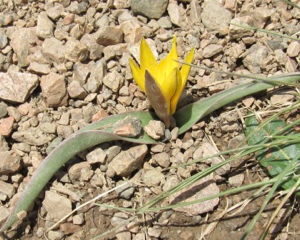 |
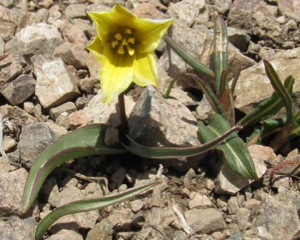 |
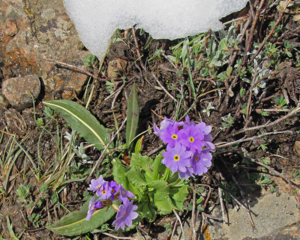 |
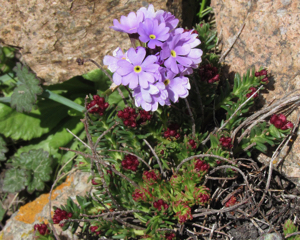 |
|
Tulips grow wild in Kazakhstan (just like in the mountains of Turkey, and there is some dispute about whether tulips originate in Kazakhstan or Turkey). This may be a Tulipa heterophylla (Regel) Baker. |
This wild tulip growing in the high mountains seems to be a Tulipa heterophylla (Eduardoregelia heterophylla) although it also resembles a Tulipa heteropetala Ledeb. (T.uniflora) |
Primulas and snow. |
Primulas |
|
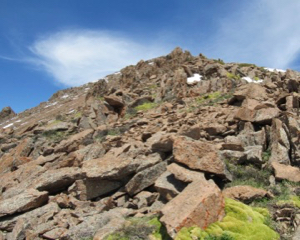 |
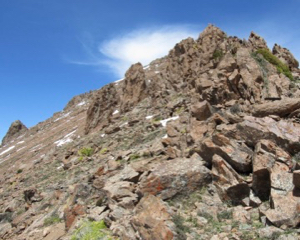 |
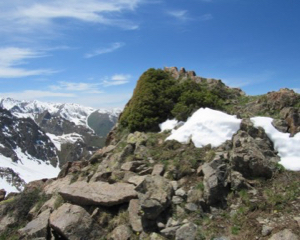 |
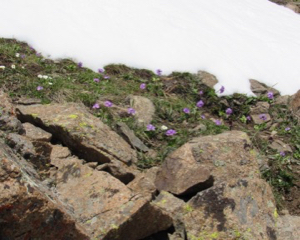 |
|
Looking up Shymbulak Peak. We did not get to the top. |
Another view as we ascended the slopes of Shymbulak Peak. |
A spot where we paused to enjoy the view of mountains and wildflowers on the slopes of Shymbulak Peak. |
As we looked down toward the ground we saw mainly rocks, snow, and grasses or mosses with scattered wildflowers. The rocks were covered with colorful lichens. |
|
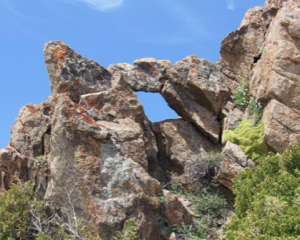 |
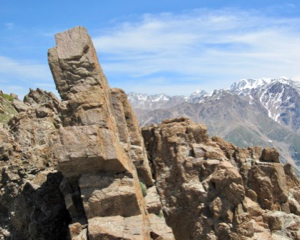 |
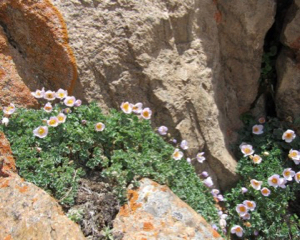 |
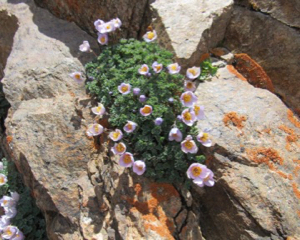 |
|
I enjoyed the rocks and lichens as we ascended Shymbulak Peak. |
Magnificent stones and grand mountains. Just 40 hours earlier we had been in Springfield, so the high altitude was an issue as we climbed up the slope. |
Paraquilegia grandiflora growing among the rocks on the slopes of Shymbulak Peak at about 3,360 meters elevation. |
Paraquilegia grandiflora thrives in the rocks on the slopes of Shymbulak Peak at about 3,360 meters elevation. |
|
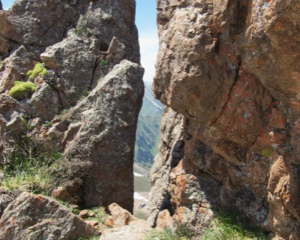 |
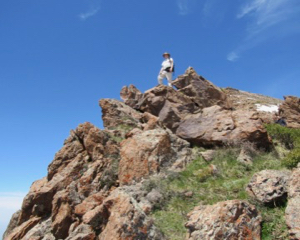 |
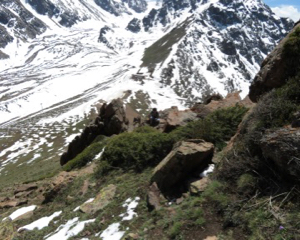 |
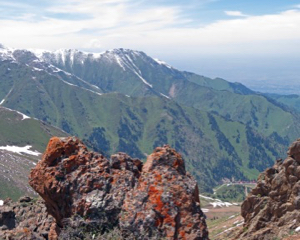 |
|
A gap between the outcroppings of rocks. |
I am standing on some rocks. |
Looking down at the Talgar Pass from the slope of Shymbulak Peak toward Peak Shkolnik (3810 m) |
The bright red and orange lichens on the rocks near us contrasted with the greens of the grasses and trees on the lower slopes below us. |
|
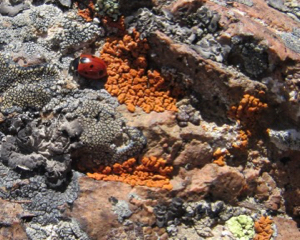 |
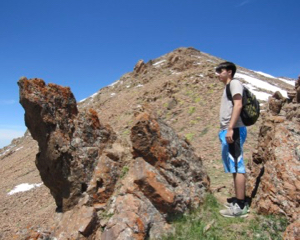 |
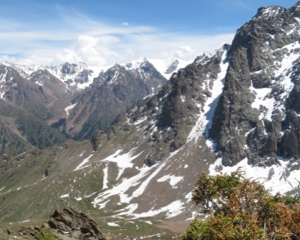 |
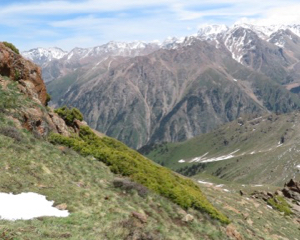 |
|
Such a bright red ladybird beetle (Coccinellidae) crawling around lichens. |
Arthur high up on the slop of Shymbulak Peak. |
A grand view from our hike. |
We paused for about thirty minutes at this point to enjoy the views and sounds. |
|
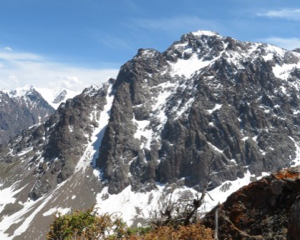 |
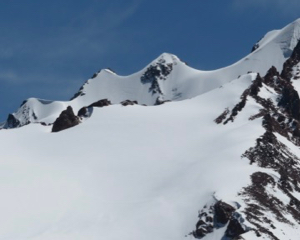 |
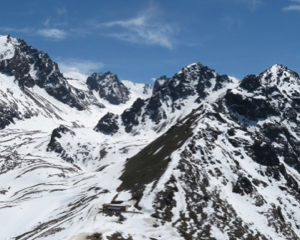 |
 |
|
This is a view of Chkalova peak (3892 meters, 12,769 feet high). Off in the distance to the left behind it is a higher snow-capped peak, named |
This is a closer look at the snow up on the peaks in the Trans-Ili Alatau (specifically, this is either Manshuk Mametova Peak or Amangeldy Peak or Komsomol Peak). |
High peaks in the Trans-Ili Alatau (a range in the Tian Shan Mountains just south of Almaty) |
Pik Talgar (4979 or 5017 meters, sources disagree), seen from the slopes of Mount Shymbulak near Talgar Pass. It is about 16,400 feet high. |
|
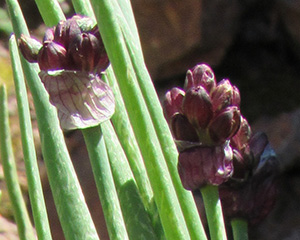 |
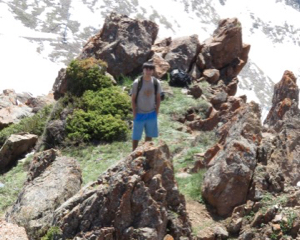 |
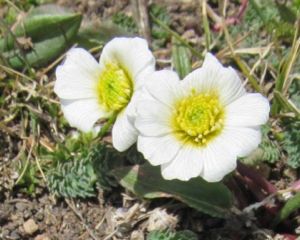 |
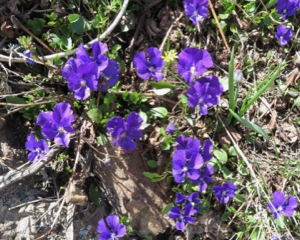 |
|
Some sort of wild garlic or onion relative growing in the high Trans-Ili Alatau mountains. |
Arthur is standing up in the spot where we rested and enjoyed the views and quiet from about 2:30 until 3:00 in the afternoon on June 9th. |
Callianthemum alatavicum |
Altai violets grow in think groups in some places. |
|
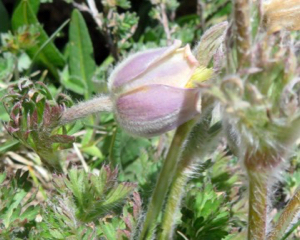 |
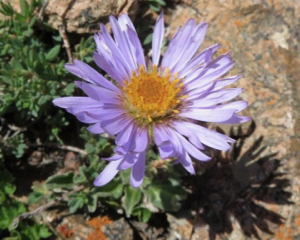 |
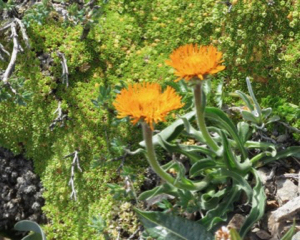 |
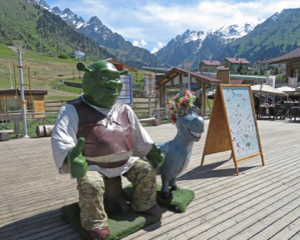 |
|
Trans-Ili Alatau wildflower. |
Maybe an example of Erigeron multiradiatus growing in the mountains. It is known as the Himalayan fleabane. |
Possibly some Erigeron aurantiacus. The Kazakh Orange Daisy. |
Shreck is waiting for visitors to pose for a photograph with him. |
|
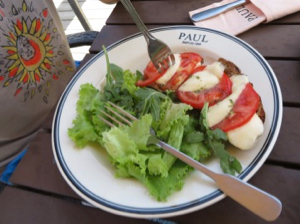 |
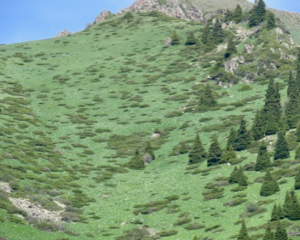 |
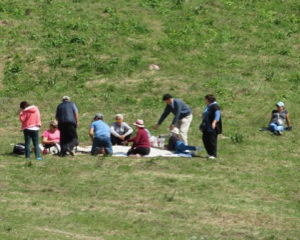 |
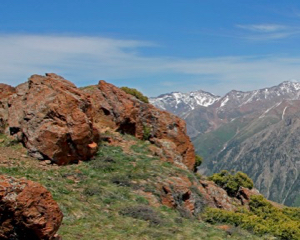 |
|
Our favorite chain of a French bakery (Paul) has a branch at Shymbulak, and we had a lunch there. |
The green colors of the Trans-Ili Alatau mountains seemed unusual to us. Arthur thought it looked almost artificial. |
People came up to Shymbulak resort area to have picnics. |
View up in the high Trans-Ili Alatau mountains. |
|
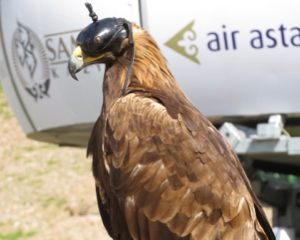 |
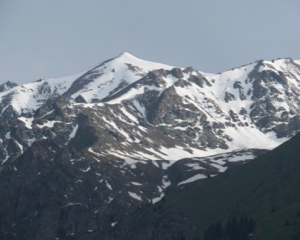 |
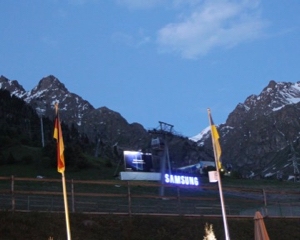 |
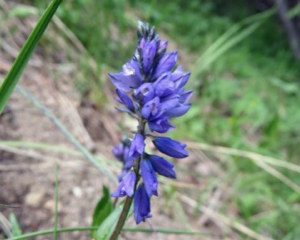 |
|
This eagle was up at Shymbulak to serve as a prop in photographs. People would let him perch on their (gloved) hands and wiggle their arms to make the eagle spread its wings as the photographer took a snapshot. |
Trans-Ili Alatau mountains; a photo with a long exposure before dawn. |
View from our balcony at Shymbulak Resort at about 4:50 in the morning. |
Maybe a Delphinium. Most likely it is a Delphinium. |
|
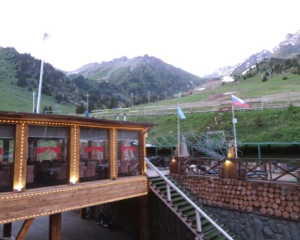 |
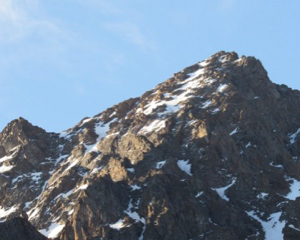 |
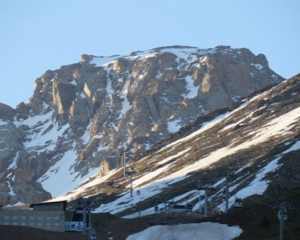 |
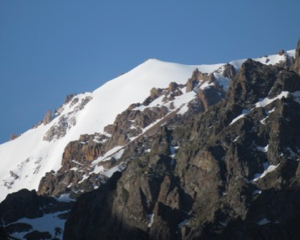 |
|
June 10th was our second morning in Kazakhstan (we had arrived shortly after 4:00 am on the morning of the 9th), and waking up in the mountains was better than sitting around in the café at the airport waiting for the bus lines to start, as we had done the previous morning. |
The sunlight started hitting the mountains around 5:00 am, about an hour after I woke up. |
Dawn light on mountains above Shymbulak resort. |
Clear morning light before 6:00 am on mountains above Shymbulak resort. |
|
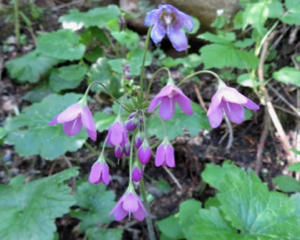 |
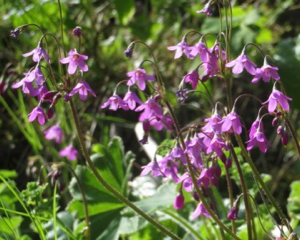 |
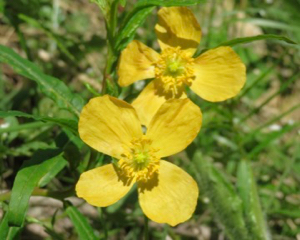 |
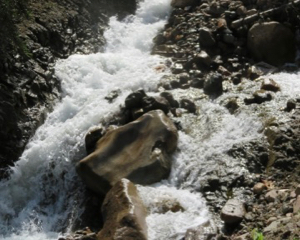 |
|
In the morning we walked down near the stream, and saw many of these flowers in what I am assuming is the Campanula genus, but I have no idea what the species is. They were lovely. |
Another cluster of some flowers I think are in the Campanula genus, growing near the stream at the bottom of the ravine past the garages and chalets in the Shymbulak resort area. |
Given the shape and number of petals, I guess this is some sort of wild Kazakhstan poppy, although it does not have a strong resemblance to the California poppies of my native state. |
The water of the stream flowing down by Shymbulak resort area splashes over many rocks at the bottom of a steep ravine. |
|
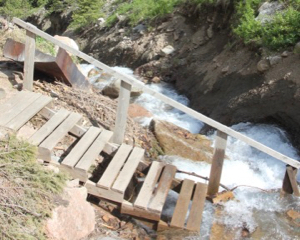 |
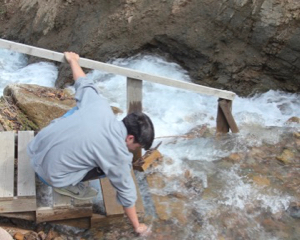 |
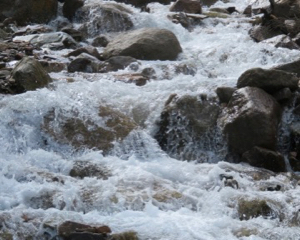 |
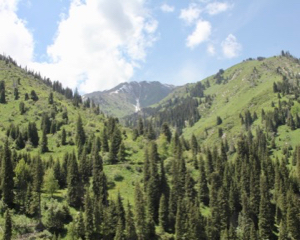 |
|
Steps down to the cold glacial meltwater flowing as a stream down from Shymbulak to Medeu. |
Arthur tests the water, and yes, it is frigid and refreshing. |
It always seems so enjoyable to observe clean mountain water flowing over rocks. |
Lower down on the slopes of the Trans-Ili Alatau the fir trees give a darker green color to the mountains. |
|
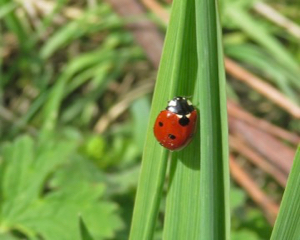 |
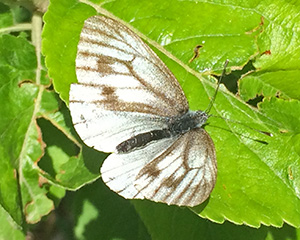 |
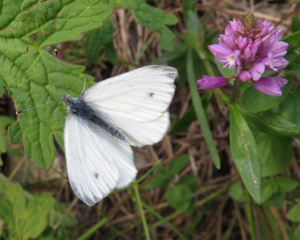 |
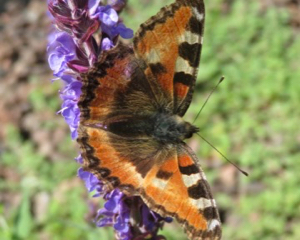 |
|
A bright ladybird beetle near Shymbulak Resort |
First butterfly in the mountains near Almaty. I do not know Central Asian butterflies, and the Internet is of little assistance in identifying these creatures. |
Second butterfly in the mountains near Almaty. Looks like a Pieris rapae. |
A butterfly in the botanical gardens in Almaty. I found two other photographs of this species on the internet, but nothing identifying what it is. |
|
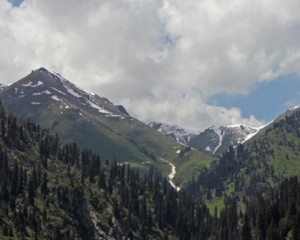 |
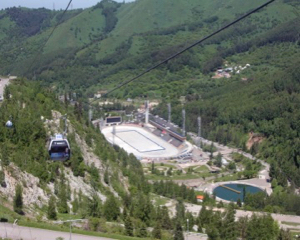 |
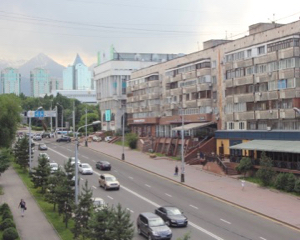 |
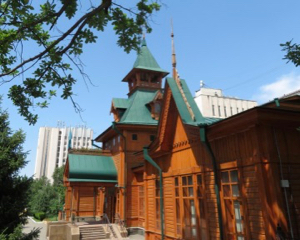 |
|
Mountains seen from cable car |
Medeu skating rink as seen from our cable car. |
View looking south down Furmanov Street from the balcony of our room on the third floor of the Iris Hotel. |
Museum of musical instruments of Kazakhstan. The building is one of a few surviving examples of architecture from the first decade of the 1900s, before the terrible 1911 Kebin earthquake. |
|
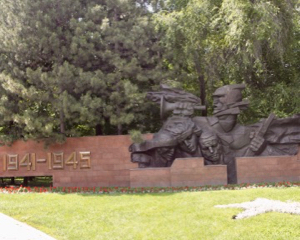 |
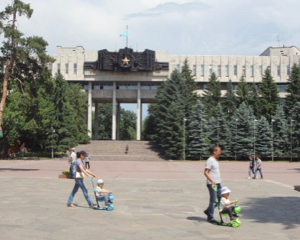 |
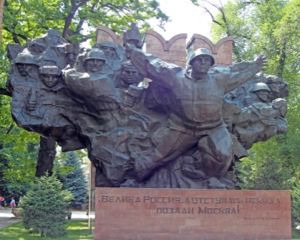 |
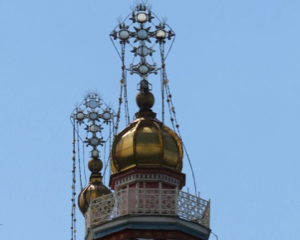 |
|
War monument in Almaty. |
The military museum is in the building in the background, but the parents pushing their children around in the foreground are more interesting. |
A monument to the 28 men who stopped German tanks from getting to Moscow (Panfilovtsev’s 28 men). This heroic event may or may not have happened, but there is a good Russian war movie released in 2016 about the event (or fabricated story). |
Crosses above the domes of the Ascension Cathedral (Zenkov Cathedral) |
|
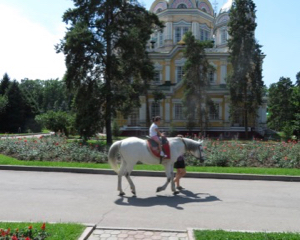 |
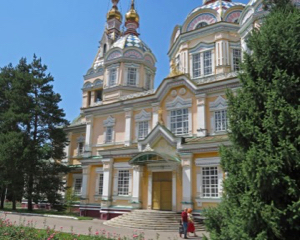 |
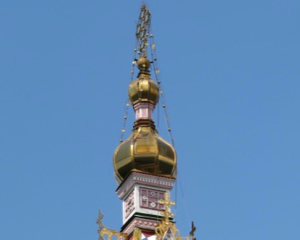 |
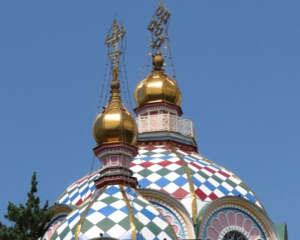 |
|
Panfilov Park and the cathedral (Ascension Cathedral) offer a location for chidlren to ride horses or feed pigeons. |
Ascension Cathedral in Almaty was constructed in the first decade of the 20th century, and it survived the Kebin Earthquake of 1911. |
Top of the tower on Ascension Cathedral. |
Domes of the Ascension Cathedral. |
|
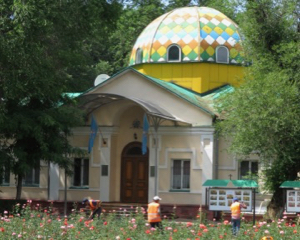 |
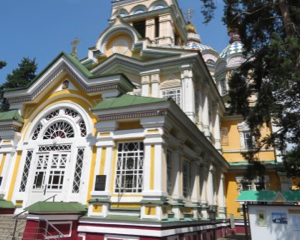 |
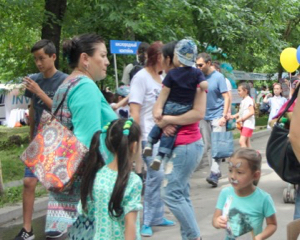 |
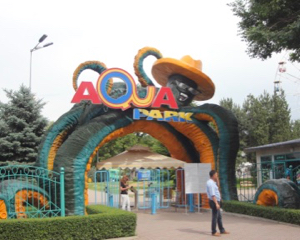 |
|
The theme of architectural domes is repeated in this restaurant in Panfilov Park just next to the cathedral. |
The main door on the west side of Ascension Cathedral. |
Central Park in Almaty was crowded on a warm Saturday afternoon in June. |
Central Park has an aquarium with dolphins, and a zoo is just east of the park. |
|
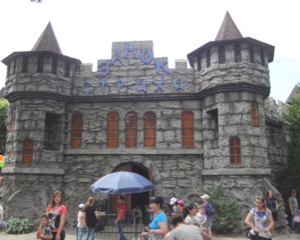 |
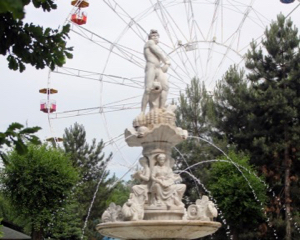 |
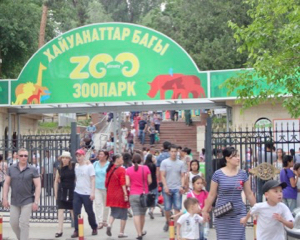 |
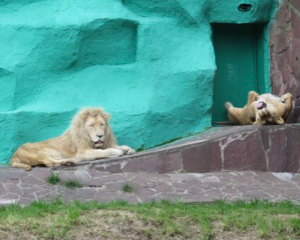 |
|
Fanciful architecture on a fun house ride in Central Park. |
The more formal fountain in Central Park seems playful when viewed with the Ferris wheel behind it. |
The zoo is open well into the evening on a Saturday in the summer. |
The zoo has lions. |
|
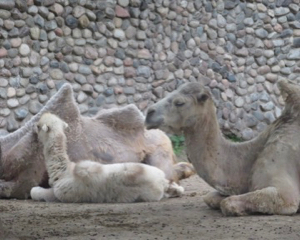 |
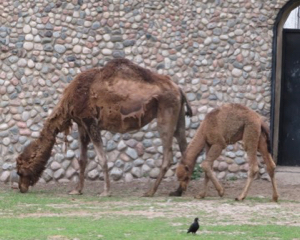 |
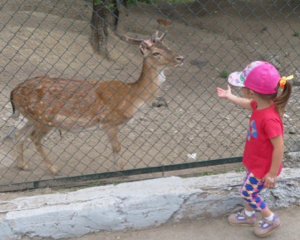 |
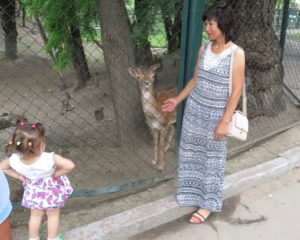 |
|
A young camel with parents in the zoo. |
More camels in the Almaty zoo. |
Some of the animals seem especially mild and tame; probably guests feed them. |
It is fun to pose for a photograph with a deer in tjhe zoo. |
|
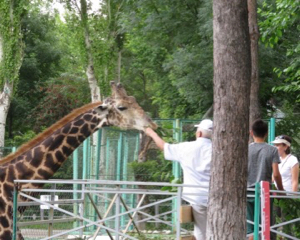 |
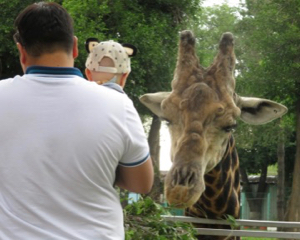 |
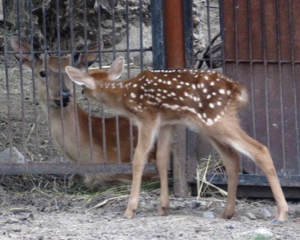 |
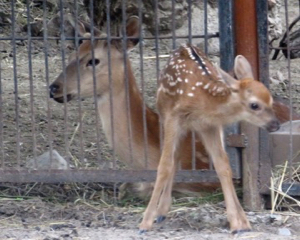 |
|
Children were invited to help the zookeeper feed the old giraffe. |
Some children were too young to feed the giraffe, but they could get as close to the giraffes as their parents could bring them. |
This little deer seemed especially young. I think it was a Dubowsky’s Sika Deer (a species from East Asia). |
The tiny baby fawn. |
|
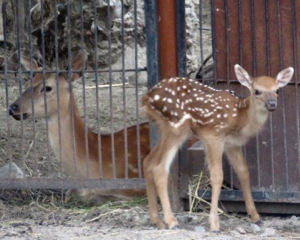 |
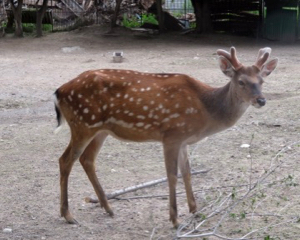 |
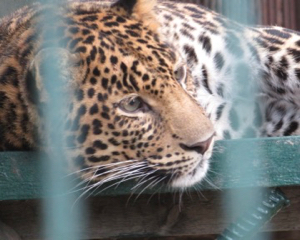 |
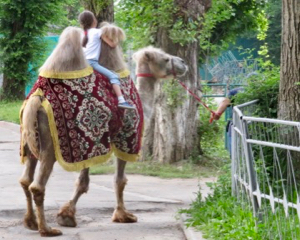 |
|
What could be cuter than a little fawn? |
Many good views of deer in the zoo. |
This leopard was taking it easy. |
In addition to horse rides, children could ride camels in the zoo. |
|
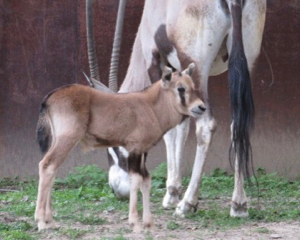 |
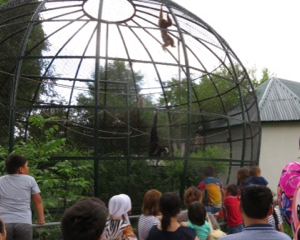 |
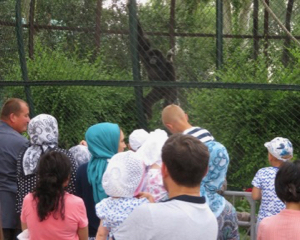 |
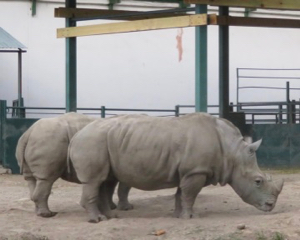 |
|
When I was very young (until about age six) we lived in El Toro (now Lake Forest) California, just a mile or two away from a Lion Country Safari zoo. I always liked the gemsbuck antelopes, and it was a treat to see this little gemsbuck with its mom. |
The gibbons attracted a dense little crowd of enthusiastic Kazakhstani guests. |
This little gibbon seems to have a captive audience. |
The rhinoceroses looked healthy. |
|
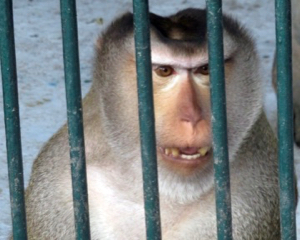 |
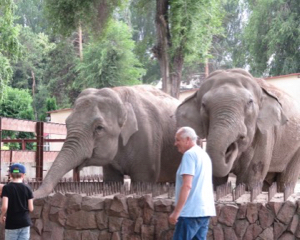 |
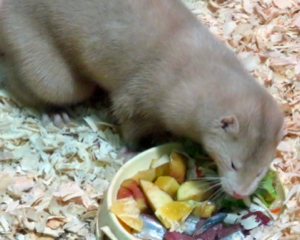 |
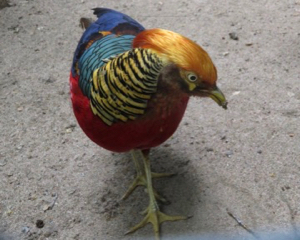 |
|
This little monkey seemed fierce. |
In addition to feeding giraffes, the zoo also offered children (and adults) an opportunity to feed elephants. I remember feeding elephants at the Santa Ana zoo when I was very young. |
I could not figure out what this was. It appears to be some sort of Mustelid (weasel family), but it is eating a vegetarian diet. Is that right? |
The Almaty zoo has an outstanding collection of pheasants, including this Golden pheasant. |
|
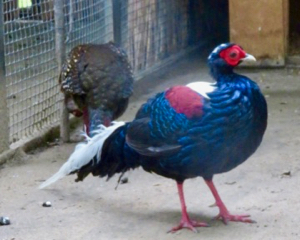 |
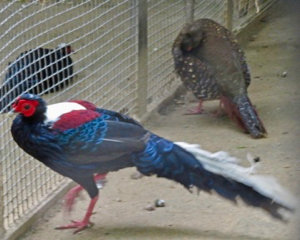 |
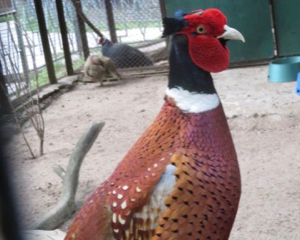 |
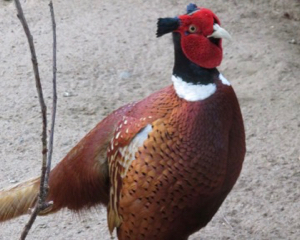 |
|
Wow, the Almaty zoo has a Swinhoe’s Pheasant (Lophura swinhoii). This is an iconic Taiwanese bird, found only on the island of Formosa. I cannot remember seeing one anywhere outside of Taiwan before my visit to the Almaty zoo. |
The lovely Swinhoe’s Pheasants in the Almaty zoo. A male and female pair. |
This lovely bird is a Kirghiz Pheasant (Phasianus colchicus mongolicus). I believe this was the first one I have ever seen. Part of the Almaty zoo’s collection. It looks pretty much like a common pheasant. |
The male Kirghiz pheasant seemed quite tame and curious, and approached the wire fence to get a better look at me, as if to see who I was and determine whether it recognized me. |
|
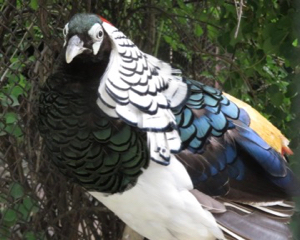 |
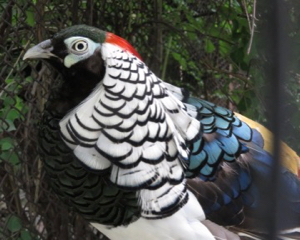 |
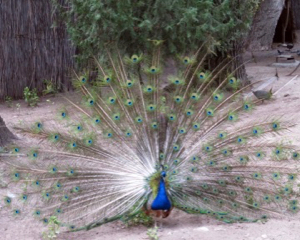 |
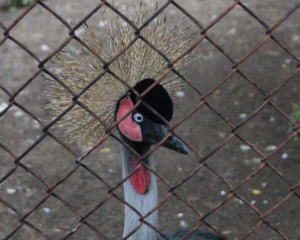 |
|
The Lady Amherst's pheasant (Chrysolophus amherstiae) . |
These Lady Amherst’s pheasants are easily tamed and simple to keep as pets. |
The peacocks were active in the Almaty Zoo. |
The Grey crowned cranes (Balearica regulorum) always seem photogenic. |
|
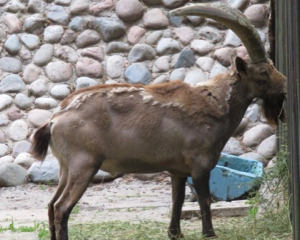 |
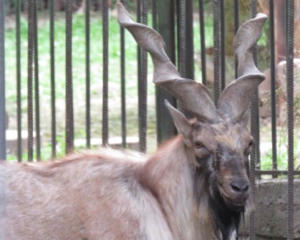 |
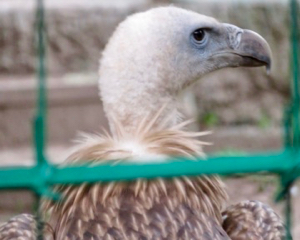 |
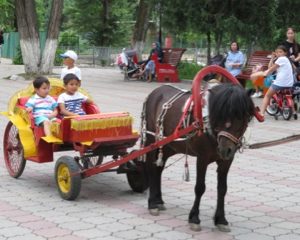 |
|
A Siberian Ibex (a native of Kazakhstan) in the Almaty zoo. |
The Markhor is another native of Kazakhstan (far southwestern Kazakhstan) in the Almaty Zoo. |
The Himalayan Griffon Vulture has a range that extends westwards all the way into the Trans-Ili Alatau and Tian Shan; we saw some massive birds flying during our time in the mountains, and I suppose they were either these vultures or else eagles. |
Children in Central Park and the Almaty Zoo have a wide range of transport available; including carts pulled by horses. |
|
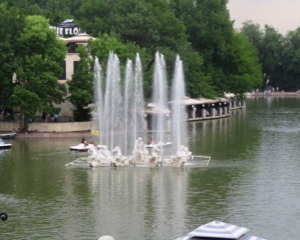 |
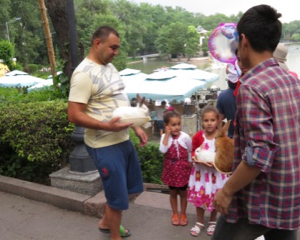 |
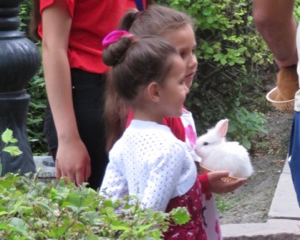 |
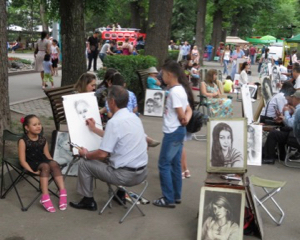 |
|
The lake in Central Park, Almaty. |
It is possible to pose with tame rabbits in your hands, and many people seem to enjoy striking a pose with a bunny in a basket in their hands. |
The rabbits who work as photography props in Central Park seem exceptionally calm and tame. Our little rabbit would have jumped away (or on to our bodies) if we had held it as these rabbits are handled. |
Artists were available in Central Park to make quick portraits of visitors. |
|
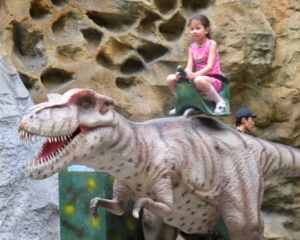 |
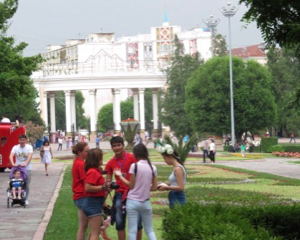 |
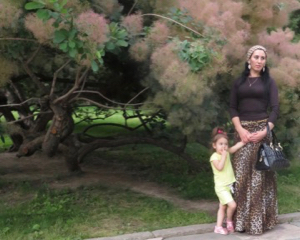 |
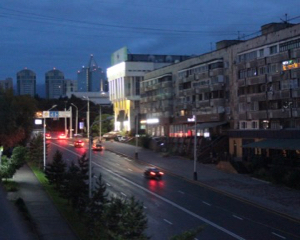 |
|
There was a dinosaur park in Central Park, and children could ride on the backs of these coin-operated dinosaurs. |
Approaching the exit of Central Park. |
This tree was interesting, but I thought the woman and her daughter made an even more interesting subject. |
Looking south from our hotel balcony in the early morning, around 4:45, with a light rain falling. |
|
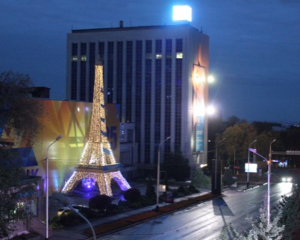 |
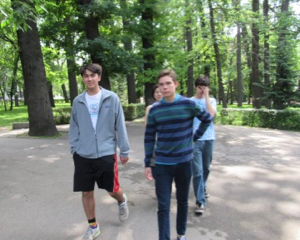 |
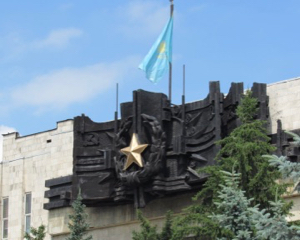 |
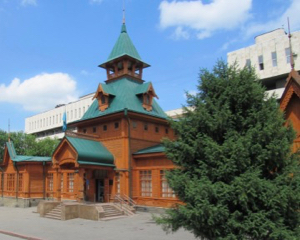 |
|
Looking northwest from our hotel balcony toward the Almaty Eiffel Tower. In addition to the original, I have seen “Eiffel Towers” in several other places, including Los Vegas, King’s Island in Ohio, here in Almaty, and Chiayi, Taiwan. |
We met Mark Moody’s sons and here is Arthur walking with them in Panfilov Park. |
That Soviet Union decorative aesthetic on display at the Military Museum in Panfilov Park. |
We returned to the Kazakh Musical Instrument museum on Sunday, but we actually went inside and saw the displays. Thanks to Mark Moody for treating us to this. |
|
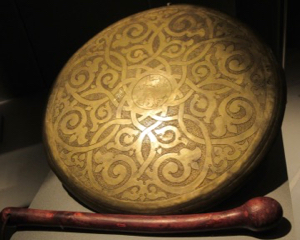 |
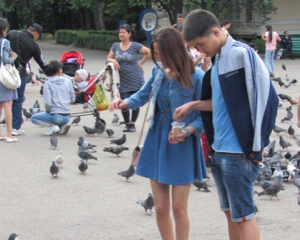 |
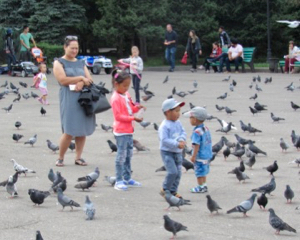 |
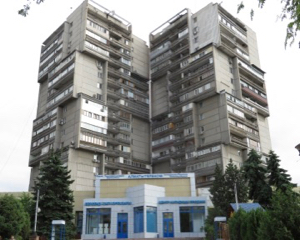 |
|
A percussive instrument displayed in the Kazakh Musical Instrument Museum. This gong is called a Shyn. |
Panfilov Park offers Almaty residents an opportunity to interact with pigeons, and some people seem to find joy in feeding the birds. |
Children either feed the pigeons or try to catch them (or kick them). The folkloric hypothesis that it is impossible to kick a pigeon has been disproved by Mark Moody (when he was a college student), much to his enduring shame and regret. |
An example of residential architecture of the Soviet Union era in Almaty. I consider this an excruciating eyesore, but I suppose to some people it must look fun or futuristic or lovely. |
|
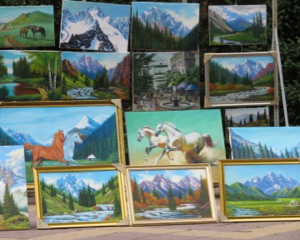 |
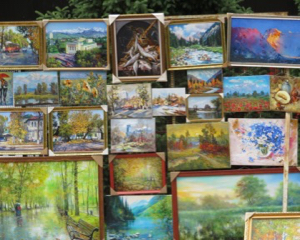 |
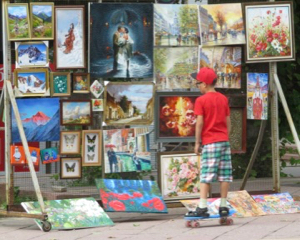 |
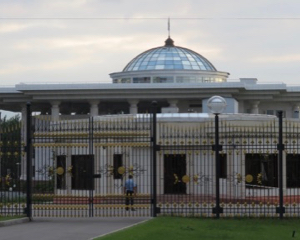 |
|
Artists display their work on the pedestrian mall along Zhibek Zholy Prospect. |
Quite a range of styles and genres displayed by local artists on Artist Row (Zhibek Zholy Prospect on a Sunday afternoon, near the Tsum Department Store) |
This little guy on a skateboard stopped to contemplate the paintings for sale. |
The Foundation of the First President of the Republic of Kazakhstan. President Nursultan Nazarbayev is sort of a cross between Lee Kuan Yew (Singapore), Yoweri Museveni (Uganda), and a better (less vicious) version of Vladimir Putin (Russia) or Tayyip Erdogan (Turkey). He's not as authoritarian as Xi Jinping (China). As far as dictators go, he is better than most. I guess that is faint praise. |
|
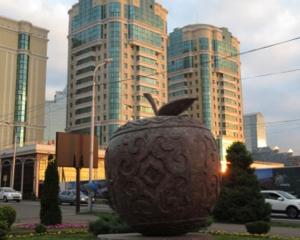 |
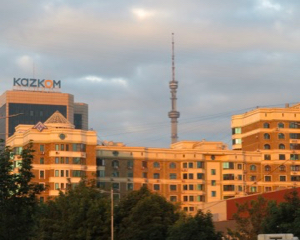 |
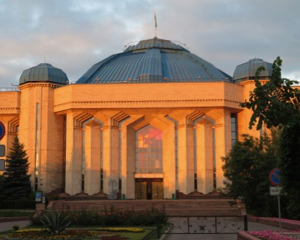 |
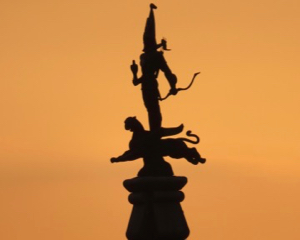 |
|
An Almaty Apple (perhaps an Aport Apple?) displayed near the Ramstor grocery store. |
The television tower stands above some buildings. The American Consulate is in the tall building on the left, I think. |
The State Museum in Almaty. |
The “Golden Man” statue on a pillar near the government buildings in Almaty. |
|
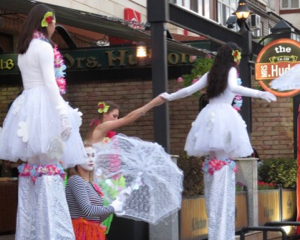 |
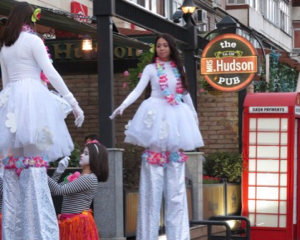 |
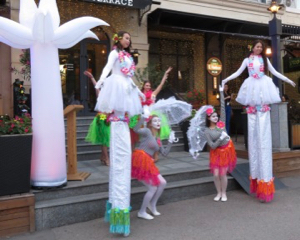 |
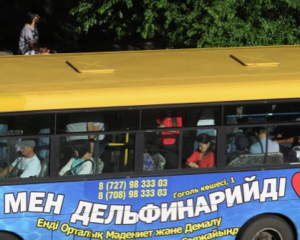 |
|
A publicity photo shoot in front of a restaurant. I love the costumes. |
I suppose it is a promotion at a restaurant on Satpaev Street, at the corner with Furmanov Street. |
The women strike their poses for the photograph. Do the costumes and poses suggest fun and good food to you? |
The morning bus across from our hotel. I like to look out and watch people in the morning. They must hurry off to their offices while I can enjoy a free day. |
|
 |
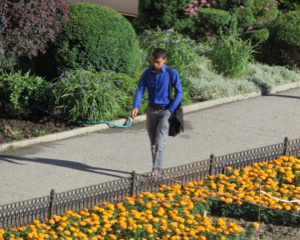 |
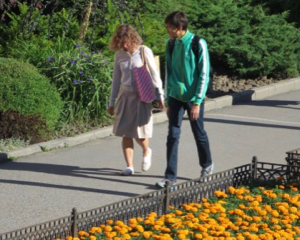 |
 |
|
Almaty offers views like this, with new buildings given the grand background of the mountains. |
Typical guy walking along the sidewalk, perhaps cheered slightly by the many marigolds planted aside his path. |
It is time for the Monday morning commute to work. I wonder what this couple was discussing. |
Advertising in Kazakhstan seems fairly easy to understand; these attractive persons recommend I eat this snack. |
|
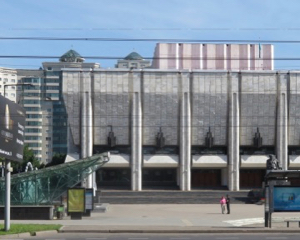 |
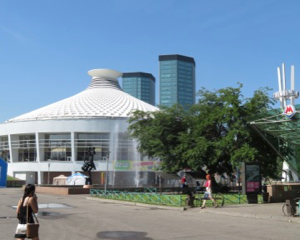 |
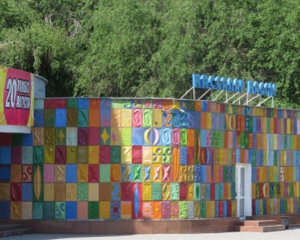 |
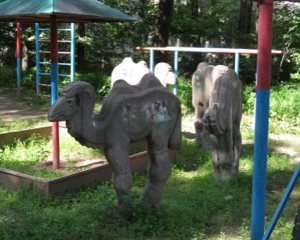 |
|
Big theater in Almaty |
The circus building in Almaty. |
I love the wall on this circus ticket kiosk. |
Old playground among Soviet-era housing near the art museum. |
|
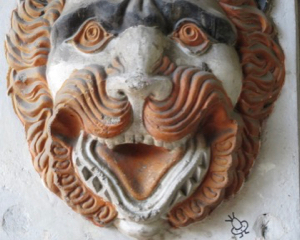 |
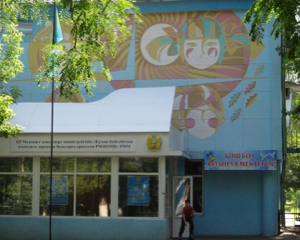 |
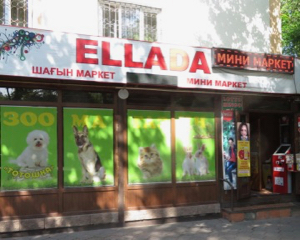 |
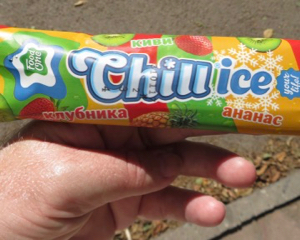 |
|
Architecture decorative detail dating to the Soviet era. |
Murals in residential area. This looks like the Soviet Era art I recognize from my years of subscribing to Soviet Life back in the 1980s. |
A mini market and pet services shop. We went in to see if there were any cute animals, but the pet services had not opened yet, so we just bought snacks. |
An ice lolly from the mini market. |
|
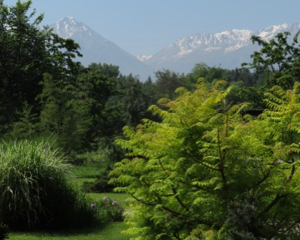 |
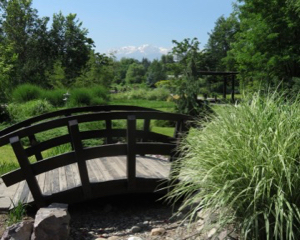 |
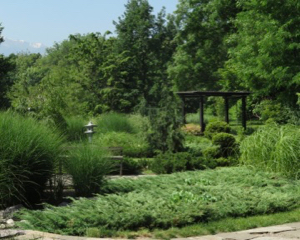 |
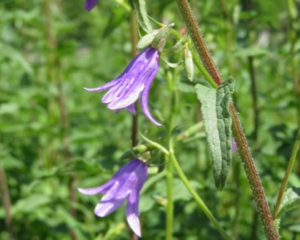 |
|
View in the botanical gardens of Almaty. |
The Japanese Garden in Almaty. |
Another view of the Japanese style garden in Almaty. |
Flowers in the botanical garden. |
|
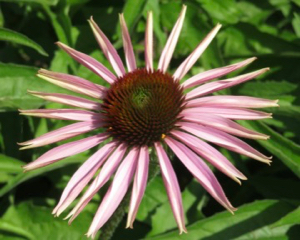 |
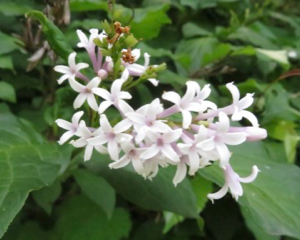 |
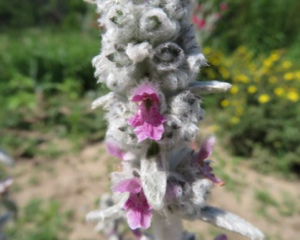 |
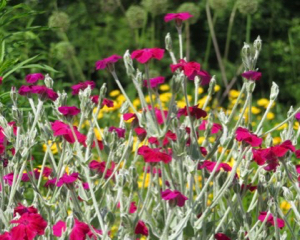 |
|
Flowers in the botanical garden. |
Lilacs still in bloom (last of the season) in the botanical garden. |
The lamb’s ear is in bloom. |
Flowers in the botanical garden. |
|
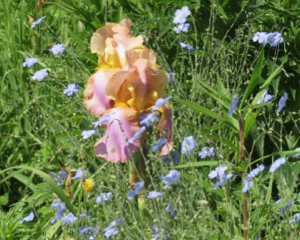 |
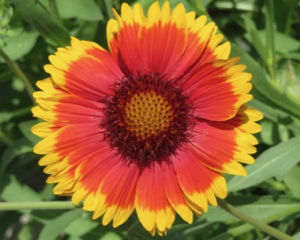 |
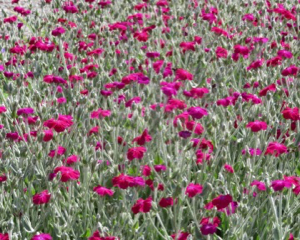 |
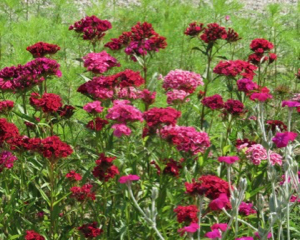 |
|
One of the last irises of the season in the botanical garden. |
Almaty botanical garden. |
Almaty Botanical Garden. |
Almaty botanical garden. |
|
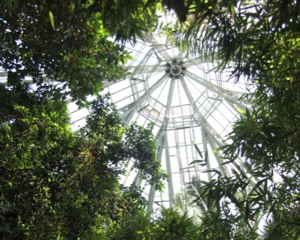 |
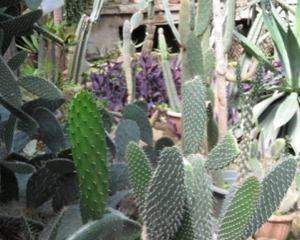 |
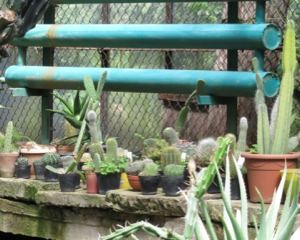 |
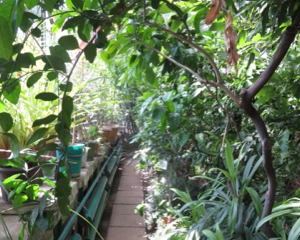 |
|
Looking up in the glass house in the Almaty Botanical Garden. |
Cactus growing in the greenhouse of the Almaty Botanical Garden. |
Almaty Botanical Garden. |
Almaty Botanical Garden. |
|
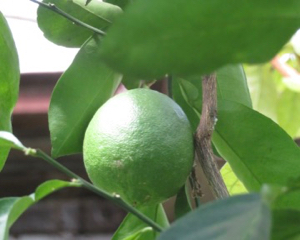 |
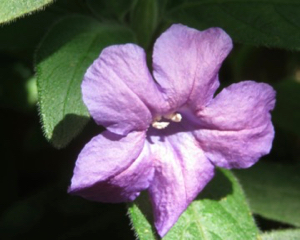 |
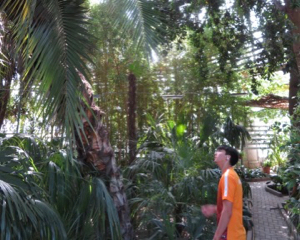 |
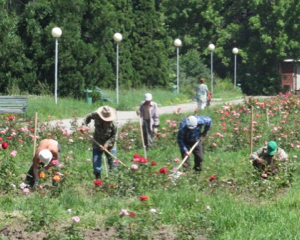 |
|
A lime that Arthur noticed in the greenhouse. |
Inside the greenhouse. |
Lovely palms in the greenhouse. |
Almaty was full of perfect roses, in almost any public space it seemed some had been planted. Here were men working in the Botanical Garden in the rose garden. |
|
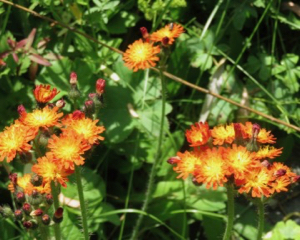 |
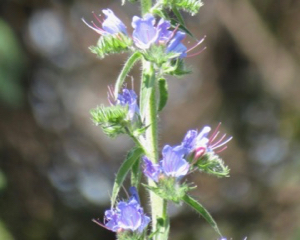 |
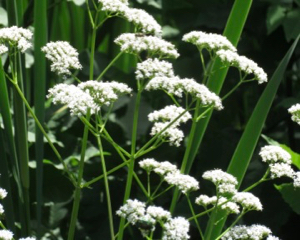 |
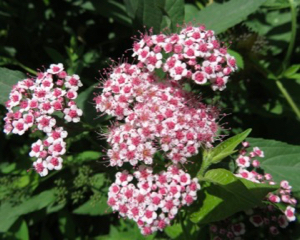 |
|
Botanical Garden flowers. |
Botanical Garden flowers. |
Botanical Garden flowers. |
Botanical Garden flowers. |
|
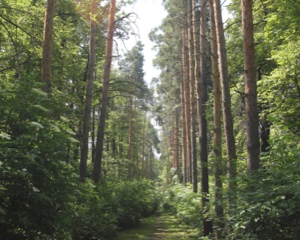 |
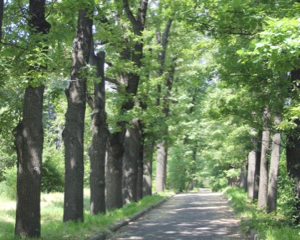 |
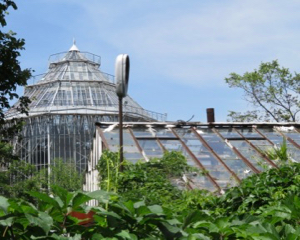 |
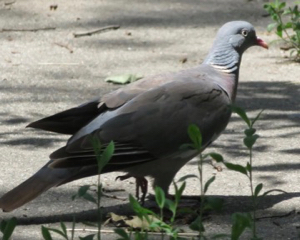 |
|
Trees in the botanical garden. |
The pathway we used in the botanical garden. |
The old greenhouse and glass house in the botanical garden. |
Pigeon in the botanical garden. |
|
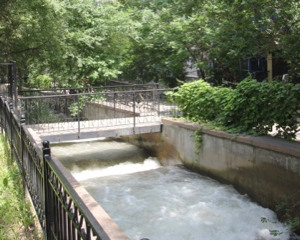 |
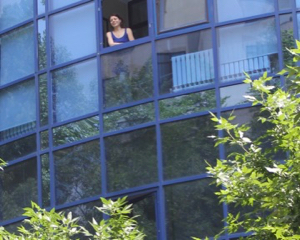 |
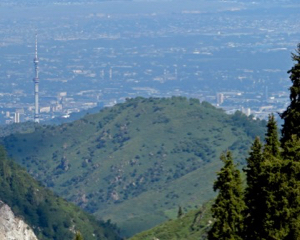 |
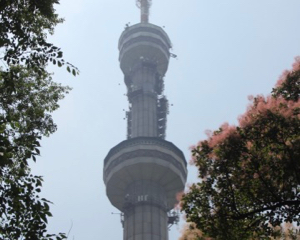 |
|
A series of canals bring water from the mountains down through courtyards and along the streets of Almaty. A natural air conditioner for the few months of hot weather in the summer. |
A friendly woman looks out her window in Almaty. She waved to me when I waved to her. I can understand her interest in watching from her window as people walk by; that is something I also like to do. |
A view of the television tower from high up in the mountains. |
A view of the television tower from right below it. We were astonished to learn that there is no public access to the tower; no restaurant or observation deck or anything like that. |
|
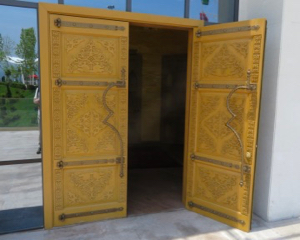 |
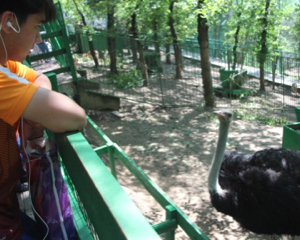 |
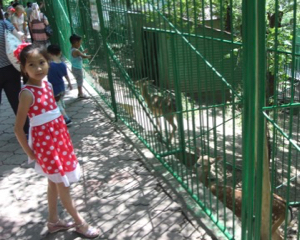 |
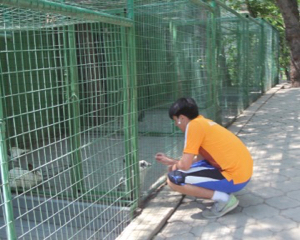 |
|
The door to the restaurant on Kok Tobe hill where we had lunch on Monday the 12th of June. I cannot reccomend much of the food, although the little bits of fried bread Kazakh style were delicious, as was my berry drink. |
Arthur regards an ostrich in the tiny zoo on Kok Tobe hill. |
Children and their parents enjoy seeing the animals in the small Kok Tobe zoo. |
We purchased some vegetables for feeding animals, but most were well-fed and uninterested. One rabbit nibbled a bit of something Arthur gave it, but mainly the deer were willing to eat from our hands, |
|
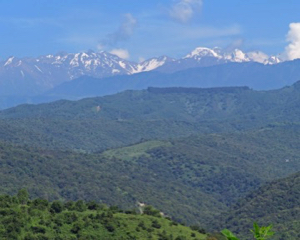 |
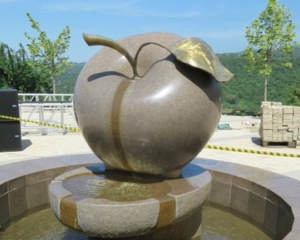 |
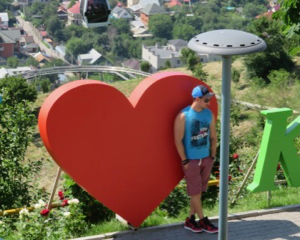 |
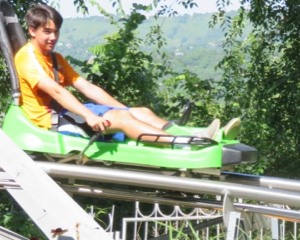 |
|
The forests of wild apple trees in the foothills of the mountains south of Almaty. This is the place where apples originally came from. |
The apple fountain on Kok Tobe. |
People pose here to show their affection for Kok Tobe hill. You can see the coasting cart rail in the background. |
Arthur and I thoroughly enjoyed our rides on the coasting carts. |
|
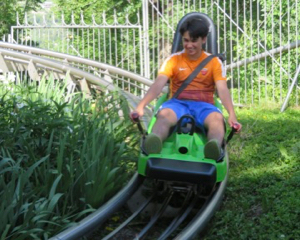 |
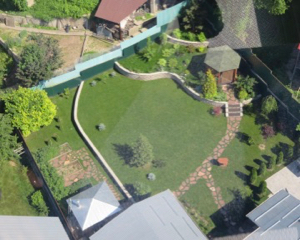 |
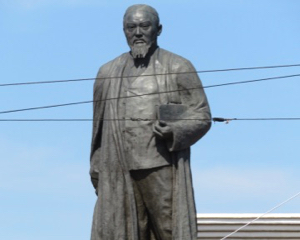 |
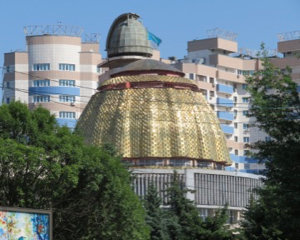 |
|
Arthur is satisfied with his experience as he comes in at the end of the coasting cart ride. |
Looking down into a garden from the cable cars going to Kok Tobe hill. |
I think this is a statue of the poet / composer / philosopher Abai Qunabaiuli. |
The Children’s Republican Palace in Almaty. |
|
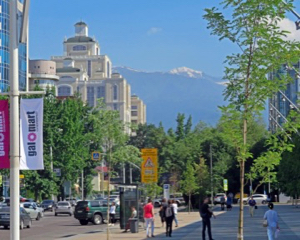 |
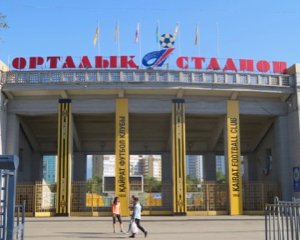 |
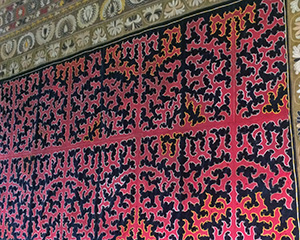 |
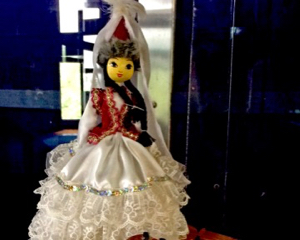 |
|
Modern buildings with mountains in the background. |
The soccer stadium where Almaty’s team (the FC Kairat) play. |
Kazakhstan textile art in the state museum. |
Kazakh doll in the state museum. |




























































































































































































































